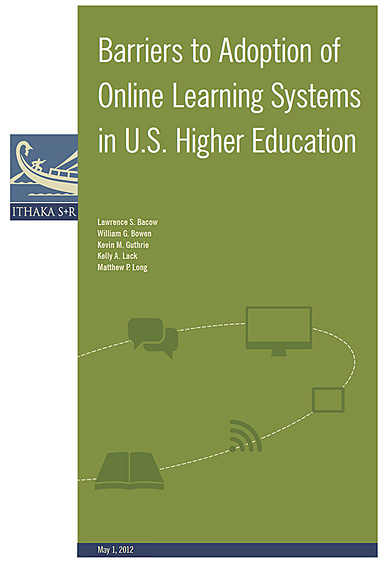Excerpt from the preface:
Digital technology has already changed the way colleges and universities function, but no matter how significant those changes feel today, real transformation is just beginning. Every day, a new program in online learning is announced, and on the horizon is the promise of using new adaptive learning technologies —or what we have come to call Interactive Learning Online—to educate more students than ever before at lower cost and with similar or even better learning outcomes.
This Ithaka S+R report is the first in a series that will provide leaders in higher education insight into what has been learned from online learning efforts to date and new research to help them move forward with the development and deployment of more advanced systems in the future.
Many of the lessons in this report can readily be applied locally; that is, they will help leaders make sound decisions for their own institutions. We have also identified two critical issues that if addressed at a system-level, will lead to better outcomes for all: the need for open, shared data on student learning and performance tracked through interactive online learning systems, and the need for investment in the creation of sustainable and customizable platforms for delivering interactive online learning instruction. We hope this report will help to stimulate discussion and planning among leaders on these important topics.
Also see:
- Tempering the Rise of the Machines— from insidehighered.com by Steve Kolowich
Excerpt (emphasis DSC):
The report, called “Barriers to Adoption of Online Learning Systems in U.S. Higher Education,” was co-written by Lawrence S. Bacow and William G. Bowen, the former presidents of Tufts and Princeton Universities, respectively, along with several Ithaka analysts. It was bankrolled by the Bill & Melinda Gates Foundation. The report contained little advocacy one way or another; rather, the authors appeared to strive for a dispassionate analysis driven by a general sense that the rise of machine learning is inevitable and universities should be prepared. Their findings were based on interviews with senior administrators at 25 public and private, four-year and two-year colleges, including “deep dive” analyses at five of them.









